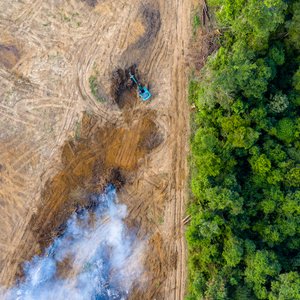Opinion: WWF relegation of pangasius from yellow list to red list about undermining aquaculture
Turning the screw: IntraFish report that the WWF have regraded pangasius from their yellow list of fish to eat to the red list. This move means that consumers are now being told to avoid buying pangasius whereas previously they could. Mark Powell, Global Seafood Leader at WWF said that the change was due to ‘problems with governance’ whatever that means.
We, at Callander McDowell, suspect that the problems with governance are not a reflection of changes to the way pangasius are farmed but have more to do with changes in the way that the WWF try to undermine the global aquaculture industry.
IntraFish report that new WWF guides have been produced in Germany, Austria, Switzerland, Belgium, Norway and Denmark. They are all different and give different levels of clarification about the way that the WWF have reached decisions about which fish are acceptable to eat and which are not. It is the Danish guide that provides the most information. They say that farms pollute the natural environment with nutrients, medicines and pesticides. There is also a risk that farmed fish will spread disease to wild fish populations and there are no assurances that the feed used does not comes from overfished stocks. Nothing has changed about the way pangasius is farmed so it must be something else that has promoted the move from yellow to red.
This something else is clear to see when the guide refers to the Aquaculture Stewardship Council. It states that ‘As long as the ASC is not on the market, you do not know pangasius is farmed sustainably. Therefore WWF recommends that you find an alternative from the green list instead’.
The message to pangasius farmers is clear. Sign up to the ASC and then pangasius will be given a green or yellow rating. Alternatively, ignore the ASC and the WWF will continue to recommend that consumers avoid pangasius.
The WWF are clearly keen to see the aquaculture industry play their tune even if their policies appear to conflict with each other. They advocate that consumers should eat only MSC certified wild fish even if those fish are actually farmed such as Alaskan salmon. It doesn’t seem to matter to them that the huge quantities of farmed wild fish released into the ocean are denuding parts of the Pacific of their natural resources.
They also choose to ignore that the certification system is clearly flawed as illustrated by the current conflict over MSC certified mackerel. These mackerel don’t seem to appreciate that they are not supposed to swim outside the area designated by the MSC.
The WWF do not approve of farming carnivorous fish because the fish eat other fish (just as the MSC certified wild fish in the Pacific do). Instead, they advocate the consumption of herbivorous farmed fish but then place these same fish on the red list because they may be eating feed made form overfished stocks, even though they eat vegetarian feeds.
Whilst they do not approve of farming salmon, the WWF are unable to put farmed salmon on their red list simply because they are so important to the supply of fish to the European market. They have therefore given farmed salmon a yellow rating; that is as long as the fish are farmed in Europe. Chilean farmed salmon are given a red rating. This makes no sense, but then nothing about the WWF and their attitude to farmed fish does. We can only assume that the red rating comes from the fact that the WWF know little about the Chilean salmon farming industry and have based their rating on the negative publicity generated from the recent ISA outbreak. After all, the same companies that operate in Europe also operate in Chile.
Mark Powell spends a great deal of time writing blogs including one about how he spent 38 days swimming round Bainbridge Island underwater (http://swimbi.blogspot.com/). Perhaps if he spent less on such jaunts and more time learning about the aquaculture industry he would be more qualified to judge whether fish like pangasius and farmed Chilean salmon should be on the red list or on the green list where they really should be.
Unfortunately, Mark fails to understand that the best way to protect the oceans that he so treasures is to remove the fishing pressure of wild stocks by promoting the consumption of more farmed fish.
[Source: Excerpted from ReLAKSation no 479, a newsletter from Callander McDowell]







